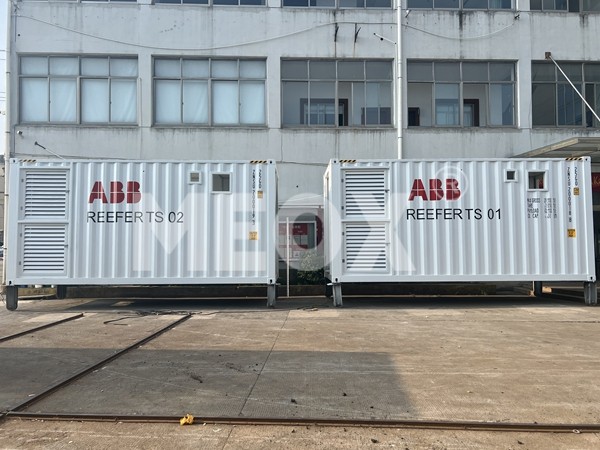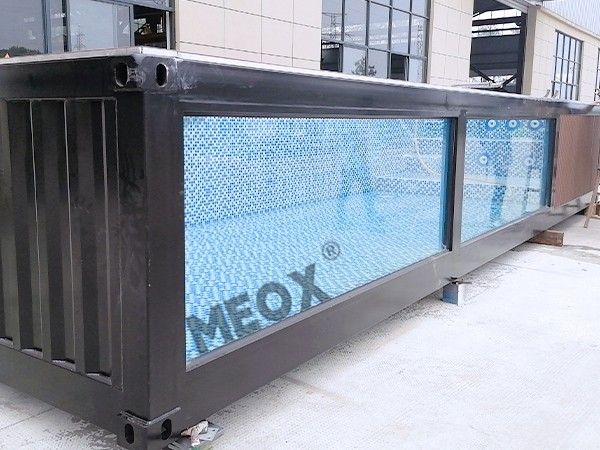With the increasing demand for renewable energy sources and the need to store large amounts of electricity, energy storage containers are becoming a vital part of the energy infrastructure. These energy storage shipping containers are equipped with advanced battery storage technology, allowing energy to be stored efficiently and accessed when needed. Whether for residential, commercial, or industrial use, energy storage containers provide a flexible and scalable solution to energy storage challenges. In this article, we’ll explore the advantages, types, and pricing of energy storage containers.

What is an Energy Storage Container?
An energy storage container is a mobile or stationary unit designed to store electricity. These containers typically house large-scale batteries, such as lithium-ion or lead-acid batteries, that can store energy produced from renewable sources like solar, wind, or hydropower. They can also store electricity from the grid during off-peak hours to be used when demand is higher.
The key feature of energy storage containers is their ability to store power and provide it back to the grid or a local energy system when necessary. This energy can be used to power homes, businesses, and industrial operations, or even help stabilize the electrical grid during peak times.
Energy storage shipping containers are essentially shipping containers that have been specially modified to house energy storage systems. They offer a convenient and flexible way to deploy energy storage solutions, and their modular nature allows for easy scalability.
Advantages of Energy Storage Containers
There are several compelling reasons why energy storage containers are becoming a go-to solution for energy storage needs:
Scalability One of the most significant advantages of energy storage shipping containers is their scalability. These systems can be easily expanded by adding additional containers, depending on the size of the energy storage project. Whether you need a small-scale solution for a residential area or a large-scale energy storage system for an industrial site, these containers can be customized to meet specific energy needs.
Portability Energy storage containers offer great portability. Since they are based on the standard dimensions of shipping containers, they can be easily transported by truck, ship, or rail. This makes them ideal for temporary or mobile installations, such as those required for construction sites, disaster relief, or off-grid power systems.
Cost-Effective Compared to traditional energy storage systems, energy storage containers are relatively affordable. The modular design reduces the need for complex infrastructure, making them a more cost-effective option for energy storage. Additionally, they allow for the storage of surplus energy at a lower cost, which can be used during peak demand hours or sold back to the grid.
Durability and Safety Shipping containers are built to endure harsh weather conditions, making them highly durable. When used for energy storage, they provide a secure and safe environment for the batteries and associated equipment. The container is typically equipped with cooling systems, fire protection, and ventilation to ensure the safety of both the stored energy and the surrounding environment.
Environmental Benefits Energy storage containers support the use of renewable energy by storing surplus power generated from solar, wind, or other green energy sources. By utilizing these containers, businesses and homeowners can reduce their reliance on fossil fuels and decrease their carbon footprint, making them a more environmentally friendly option.
Types of Energy Storage Containers
There are several types of energy storage containers depending on the technology used and the scale of the energy storage system:
1. Lithium-Ion Battery Storage Containers
Lithium-ion batteries are the most commonly used type of battery in energy storage shipping containers due to their high energy density, long lifespan, and efficiency. These batteries are well-suited for residential and commercial applications where high power output is needed over long periods. They are commonly used in solar power storage systems and grid-scale applications.
2. Lead-Acid Battery Storage Containers
Although less efficient than lithium-ion batteries, lead-acid batteries are still used in some energy storage containers. These batteries are a more affordable option but require more maintenance and have a shorter lifespan. They are more commonly used for smaller-scale applications and backup power systems.
3. Flow Battery Storage Containers
Flow batteries are another emerging technology used in energy storage containers. These batteries use liquid electrolytes to store energy and are ideal for large-scale applications. They offer a longer life cycle and can be easily scaled up or down depending on the energy storage needs.
4. Hybrid Systems
Some energy storage shipping containers combine multiple battery technologies to take advantage of the benefits of each. Hybrid systems may use a combination of lithium-ion and flow batteries to provide a balanced solution for both high-power output and long-term energy storage.
Pricing of Energy Storage Containers
The price of an energy storage container can vary depending on several factors, including the type of battery used, the size of the container, and the energy storage capacity. On average, a shipping container energy storage system can cost anywhere from $20,000 to $200,000 or more, depending on the scale and application.
Key Pricing Factors:
Battery Type: Lithium-ion batteries generally cost more than lead-acid batteries, but they offer higher efficiency and a longer lifespan, which can save money in the long term.
Capacity: The size of the energy storage system—measured in kilowatt-hours (kWh)—will directly influence the cost. Larger systems designed to store more energy will have a higher upfront cost.
Installation: While the energy storage container itself may be affordable, the installation costs can add up, especially for large-scale systems. Factors such as electrical wiring, cooling systems, and grid integration will all influence the installation cost.
Customization and Features: Customization options such as advanced monitoring systems, security features, and specialized energy management systems can increase the overall cost.
Price Range Examples:
- Residential systems: For smaller, home-scale applications, a basic energy storage shipping container with lithium-ion batteries might cost between $20,000 to $50,000.
- Commercial or industrial systems: Larger, grid-scale systems for commercial or industrial use can range from $100,000 to $200,000 or more, depending on the energy requirements.
Where to Buy Energy Storage Containers
If you’re interested in purchasing an energy storage container, several manufacturers and suppliers offer these systems for sale. It’s important to choose a supplier that specializes in energy storage solutions to ensure that you receive a high-quality product tailored to your needs. Some suppliers also offer custom-built energy storage shipping containers to meet specific power requirements.
When purchasing, consider factors such as warranty, system efficiency, and after-sales support. Working with a reputable energy storage container supplier will ensure that you get the best system for your needs, whether for residential, commercial, or industrial use.
Energy storage containers offer an innovative and scalable solution to meet the growing demand for energy storage. Whether you’re interested in storing renewable energy or ensuring backup power for your business, these containers provide a flexible and cost-effective option. From lithium-ion to lead-acid batteries, energy storage systems come in various configurations to meet different energy needs. By choosing the right container and technology, businesses and homeowners can enjoy the benefits of clean, reliable, and affordable energy storage.






